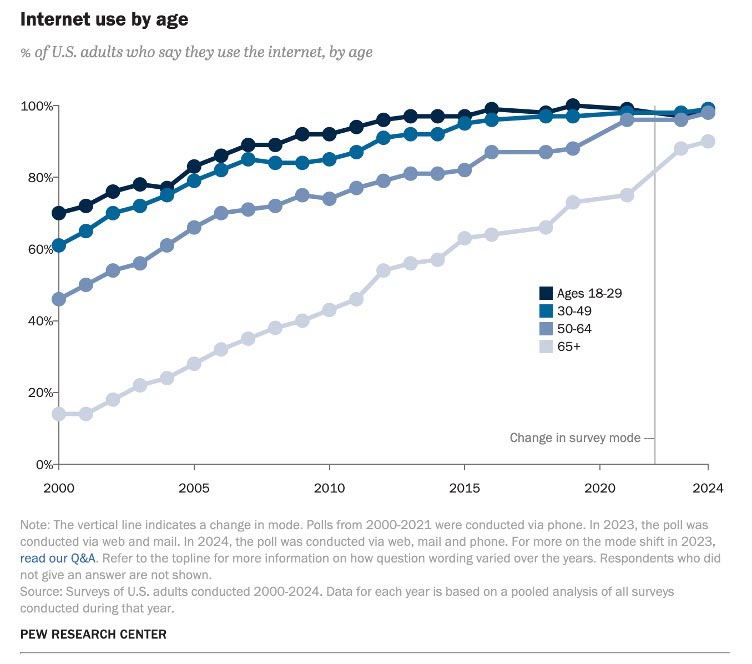When we think about artificial intelligence, we think about the ability of these platforms to spit out marketing copy in milliseconds and bring our creative imaginations to life in stunning imagery on demand. But when it comes to marketing, AI can do much more.
“For far too long, marketing campaigns have been designed through guesswork and manual labor,” notes Crystal King of HubSpot’s Marketing Academy in the course “AI for Marketers.” “But the age of AI is transforming campaign creation from start to finish.”
From performance tracking to campaign planning and development, AI has a new role to play in the lives of marketers. (Not other marketers — us, too.) Not only is AI bringing the time investment in the production of creative assets down, allowing marketers to reinvest that time back into campaign planning and strategy, but it can help design the architecture of the campaign itself.
Clearly, all of this is not happening within ChatGPT. There are myriad tools, each designed to handle a specific aspect of the larger beast. What are some of these many tools and what do they do?
1. Generative AI
Platforms include HubSpot’s AI assistant, Jasper.ai, Copy.ai, Anthropic’s Claude, Chat GPT, and Lately. As the user, you describe a general goal or target audience, and AI generates unique ideas, slogans, and creative assets to choose from. Want to try it for yourself? Take your email or blog post copy and input it into one of these platforms with the prompt, “Suggest five creative headlines for this article.” Don’t like what you get? Ask it to try again, with instructions such as making them more witty, academic, or with more detail.
2. Data analysis
Google Ads Creative Studio and WellSaid Labs analyze data on high-performing ads and campaigns. These platforms identify patterns driving engagement and uses those insights to craft new optimized ad copy and creative.
“Instead of struggling to brainstorm from scratch, have [AI] systems generate ideas,” says King. “This gives you a strong head start in creative directions worth developing into winning campaigns.”
3. Synthesizing data into helpful ideas
During the strategy phase, AI can provide valuable insights that can help refine your strategies. “Marketers must analyze customer data, understand audience behaviors and expectations, and determine the most effective messaging and channels,” says King. “There is a lot of information to synthetize from various data sources, such as web analytics, customer profiles, sales records, and more. The sheer scale of data makes it challenging to manually process and uncover meaningful correlation.”
So turn to AI. Algorithms from platforms like Coefficient, AnswerRocket, andBardeen.ai can quickly and efficiency analyze vast amounts of data, uncovering insights that would be time consuming or impossible for humans alone.
4. Consumer insights and analytics
AI can analyze customer preferences, behaviors, and purchase patterns. For example, processing social media data to uncover trending topics and perform sentiment analysis to determine consumer attitudes toward a brand or product. This is helpful both in guiding the development of existing campaigns and uncovering areas for new ones.
5. Developing personas
AI can aid in creating customer personas by analyzing data like browsing behavior, purchasing history, and demographic information. Based on this data, it can come up with different personas that you can use to target effectively.
6. Predictive modeling and trends analysis
AI algorithms can analyze past behavior and forecast future behavior. This can be predicting customer responses, purchases, or even the success (or not) of a marketing campaign. Trend analysis uses AI to understand marketing trends so you can stay on top of changes and adjust accordingly.
7. Strategy refinement
Based on insights from AI, marketers can make data-driven decisions to refine their campaigns. This might be adjusting the campaign’s messaging, targeting strategies, channels used, or the product being marketed based on what the data reveals.
8. Content creation
Platforms like Jasper.ai, Copy.ai, ChatGPT, and Articoolo use natural language processing to create draft copy that we mere humans can then refine.
9. Dynamic content assembly.
Adobe Target, Optimizely, and Evergage tap AI to analyze audience data and select the optimal mix of content elements to create tailored content at scale. HubSpot’s Smart Content tool does the same. Each of these platforms uses machine learning to develop the most relevant content modules for each user.
10. Content language
Persado and Phrasely use AI to generate variations of content language, analyzing emotional performance to recommend high-impact phrasing and word choices.
11. Sentiment analysis
Tools like Keatext and AWS Comprehend analyze social media content to determine which themes and strategies best engage each audience.
12. Audience targeting
Tools like Persado and Albert analyze and micro-target high-value segments most likely to engage.
13. Automated bidding
AI-enabled bid-management software like Marin Software and Acquisio automate bidding across platforms, using machine learning to strategically balance budgets.
14. Omnichannel
AI also powers cross-channel orchestration by coordinating by messaging and customer interactions across touchpoints. Campaign management platforms integrate AI to automatically adjust campaigns based on performance insights. This reduces repetitive optimizations by marketers and increases relevance at the same time.
15. Performance tracking
Tools like DataRama use machine learning to analyze campaign data. AI-powered attribution models provide a more accurate understanding of how each touchpoint contributes to conversions beyond basic “click” attributions. AI aids performance tracking by automating complex data analysis. The continuous insights unlocked allow marketers to adjust in real time.
“Think of AI as an assist,” concludes Kate Bradly Chernis, CEO of Lately, rounding out the HubSpot Academy session. "How can you fold it into what you are already doing (rather than using it to replace components entirely)? It’s not to say AI isn’t capable of doing that. But we find that when you fold it in as a collaborative entity in the work you are already doing, that mindset of thinking of it —not as a magic wand, but a team player—will, in the end, get you a much better result.”









